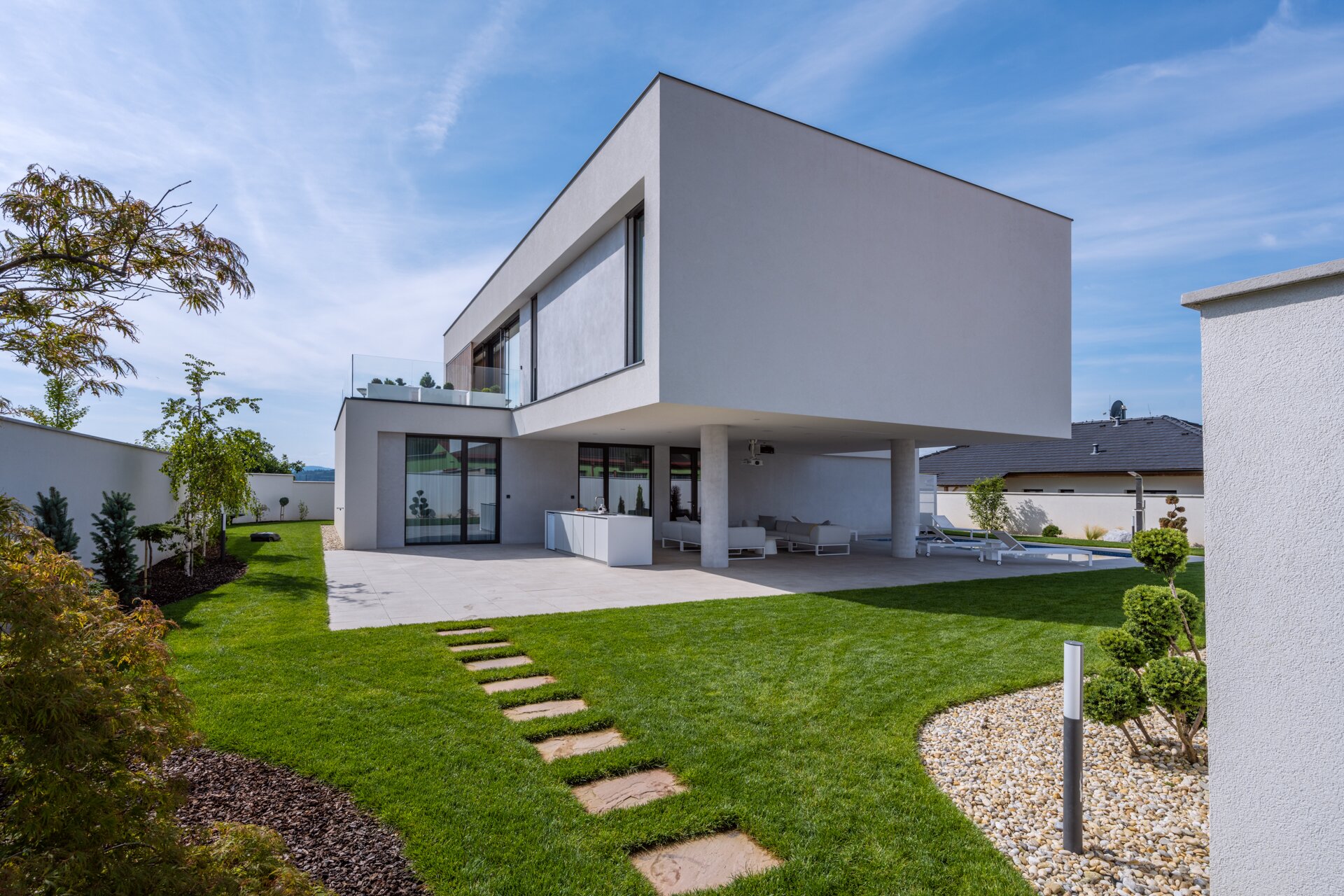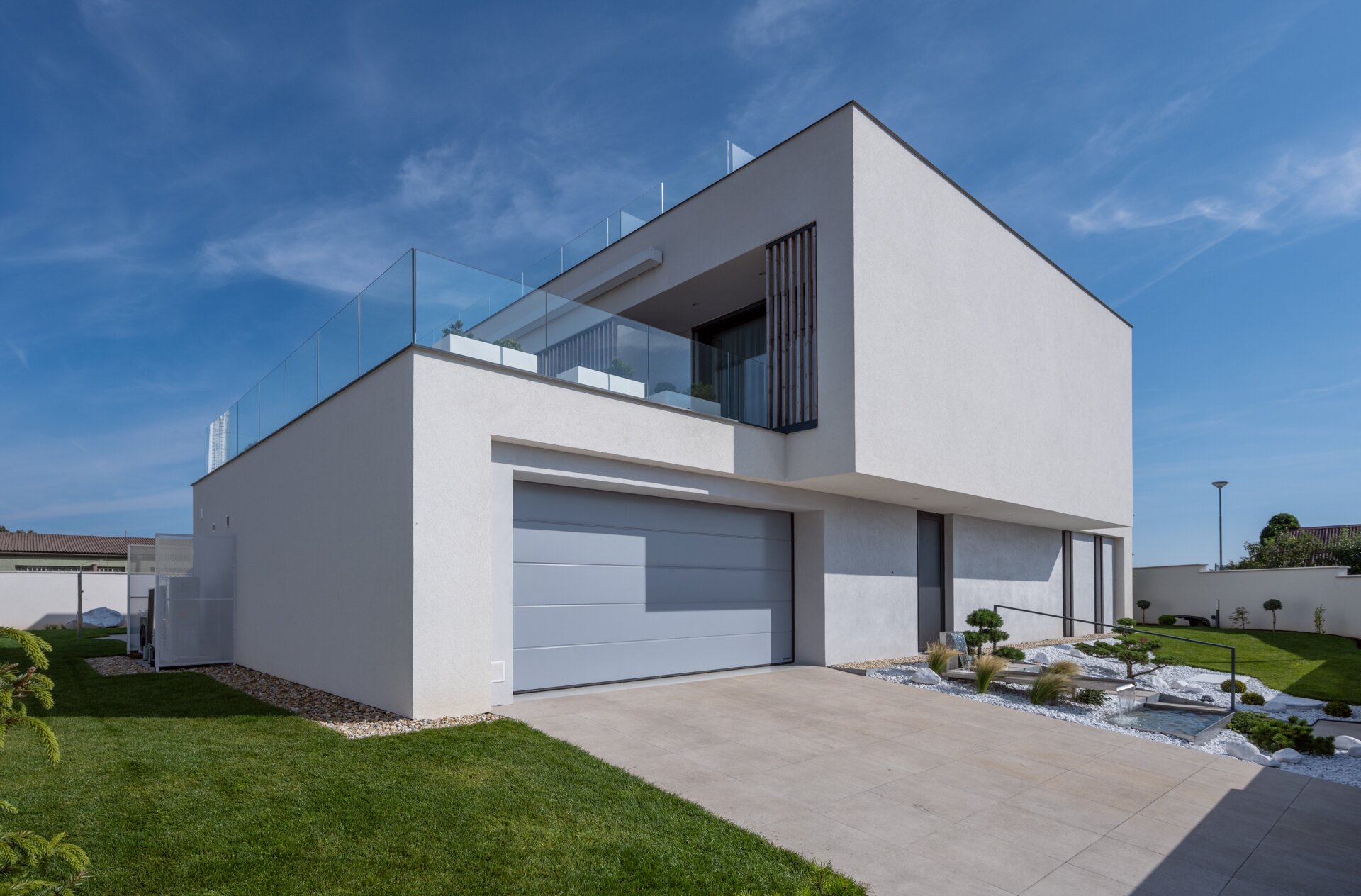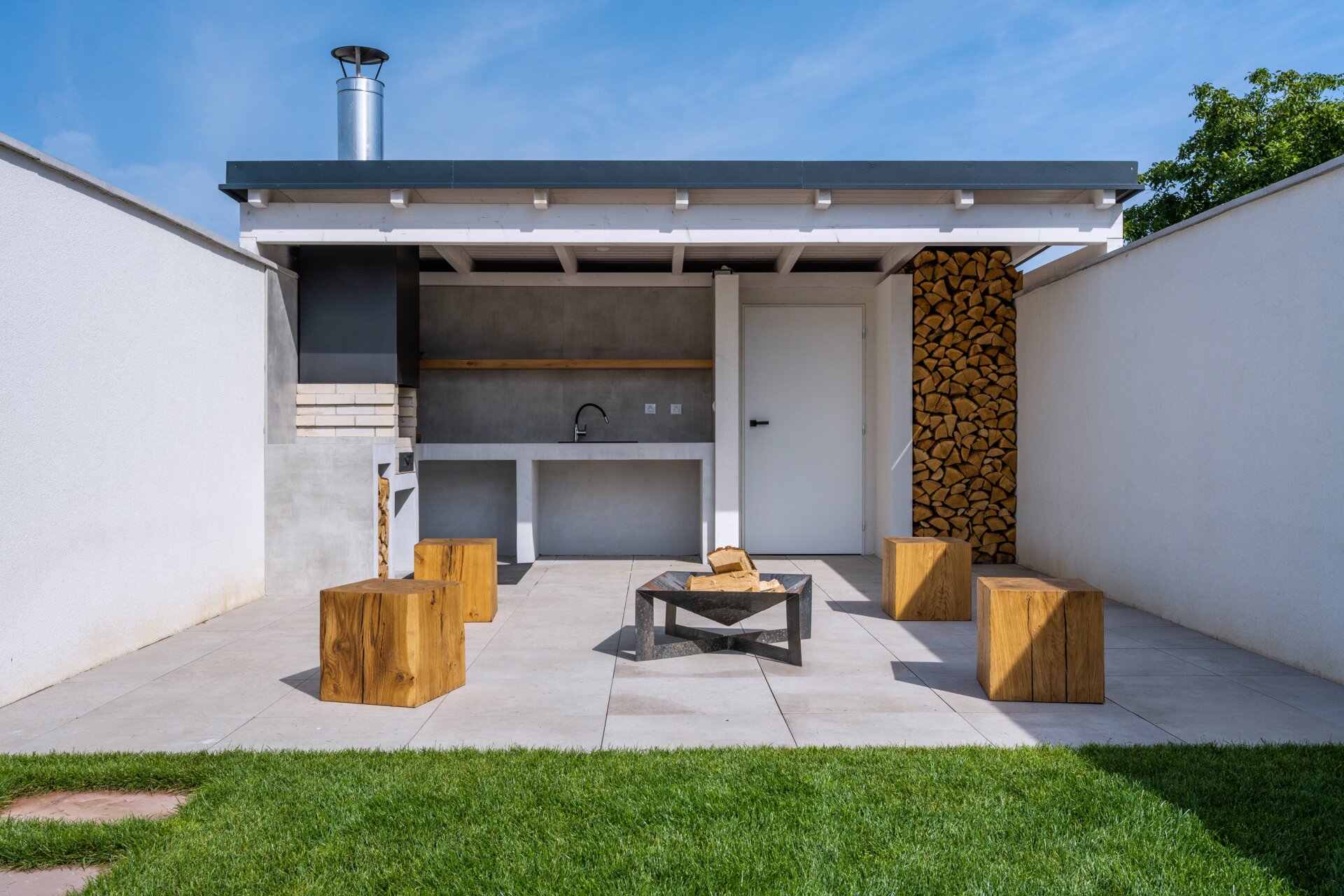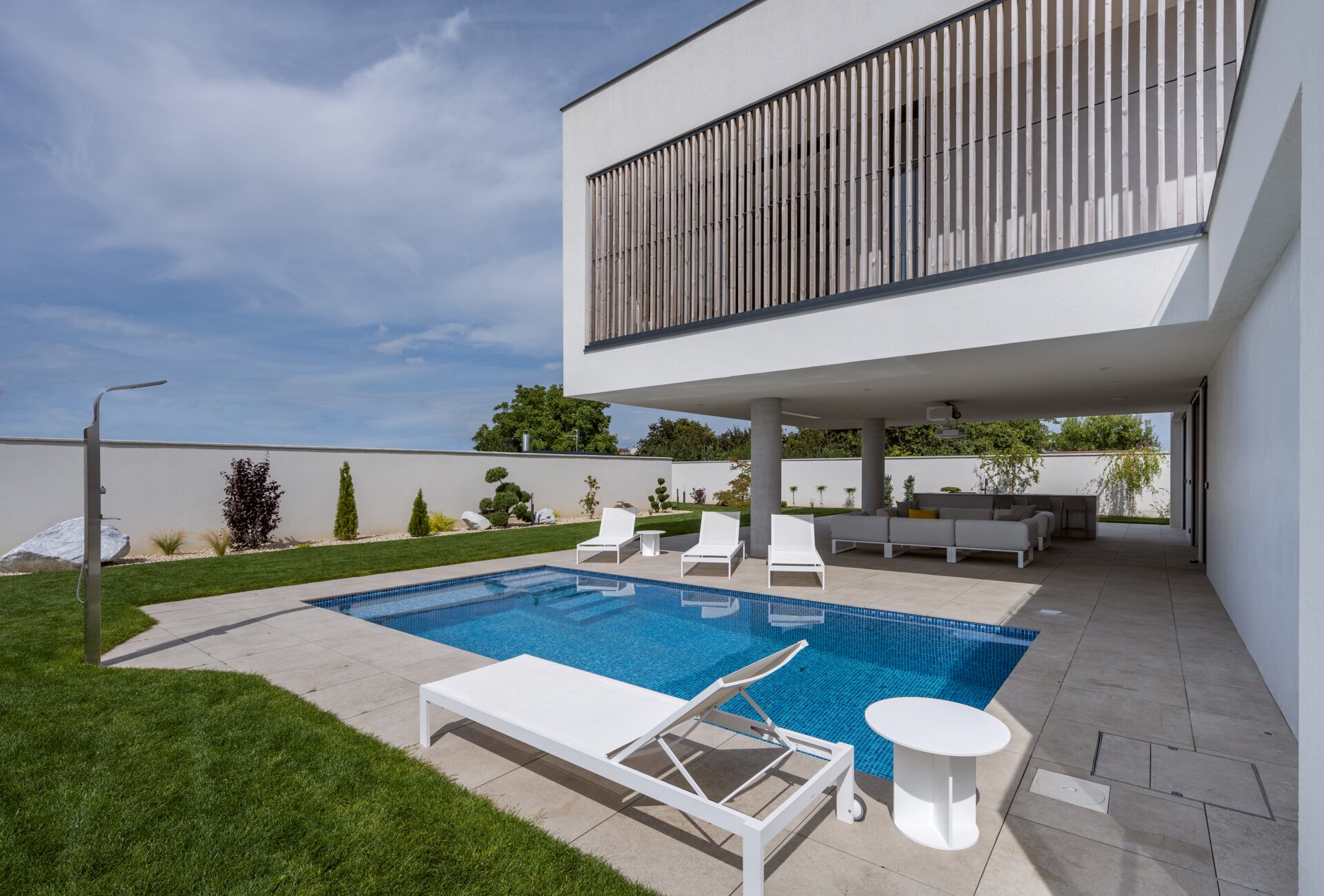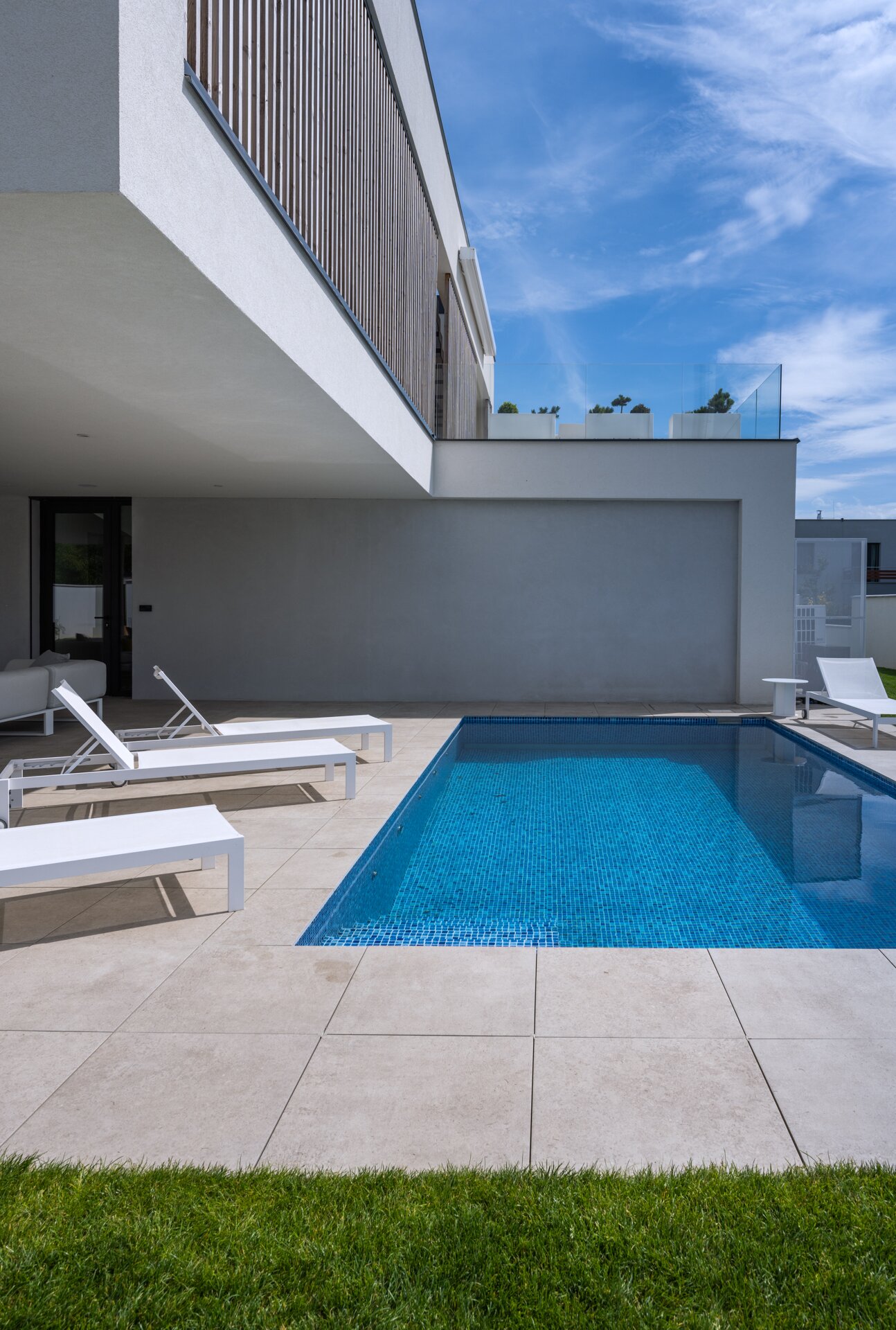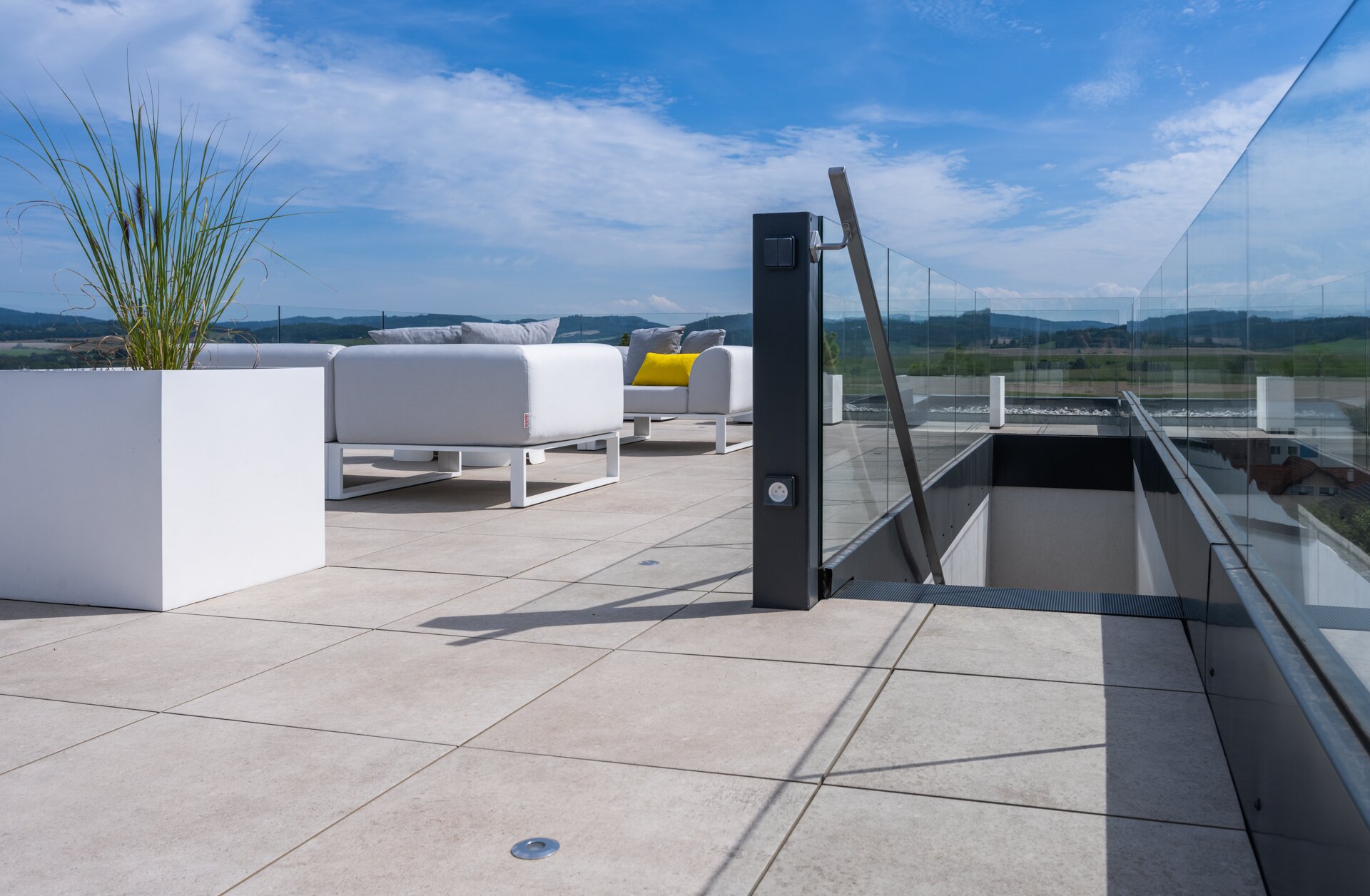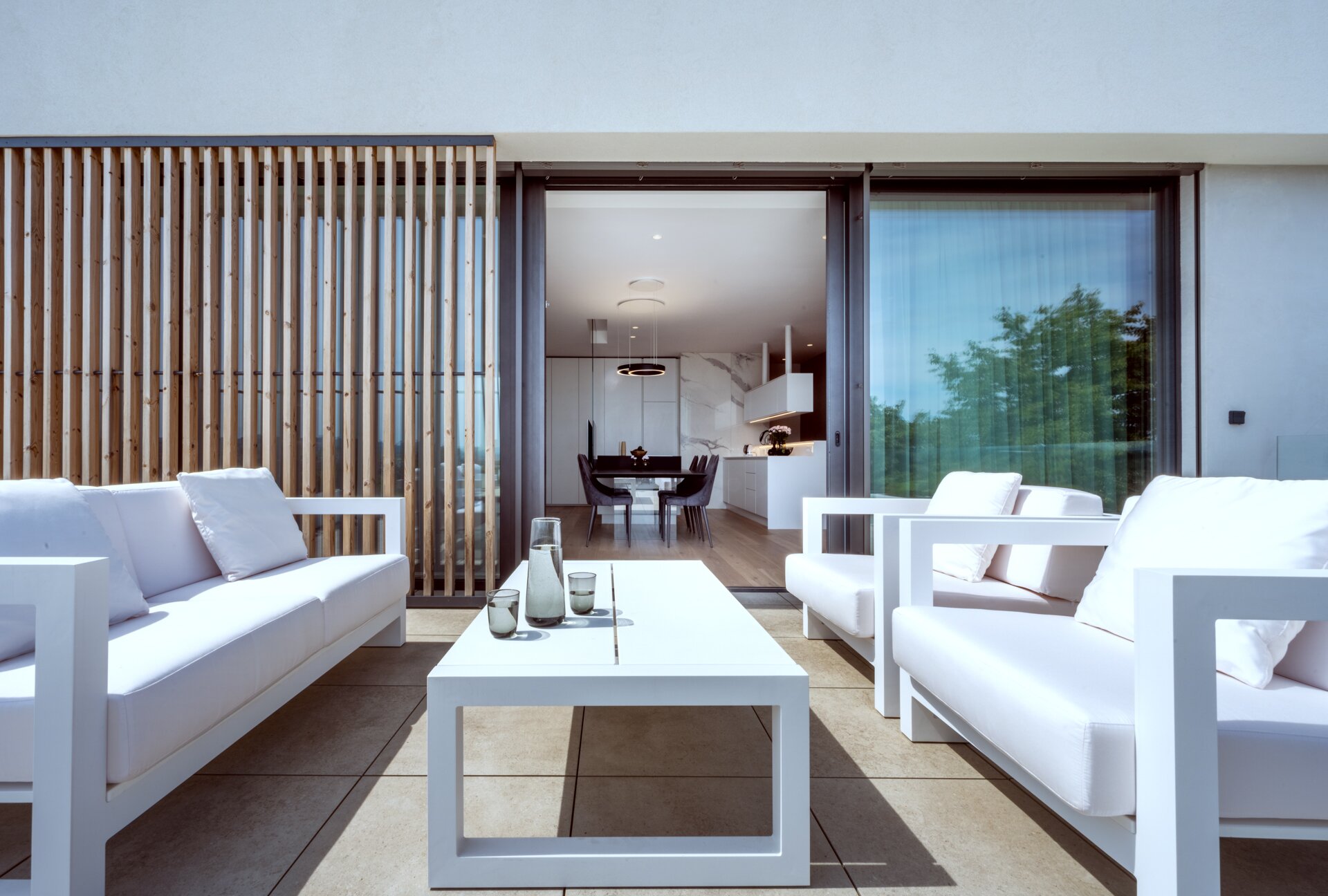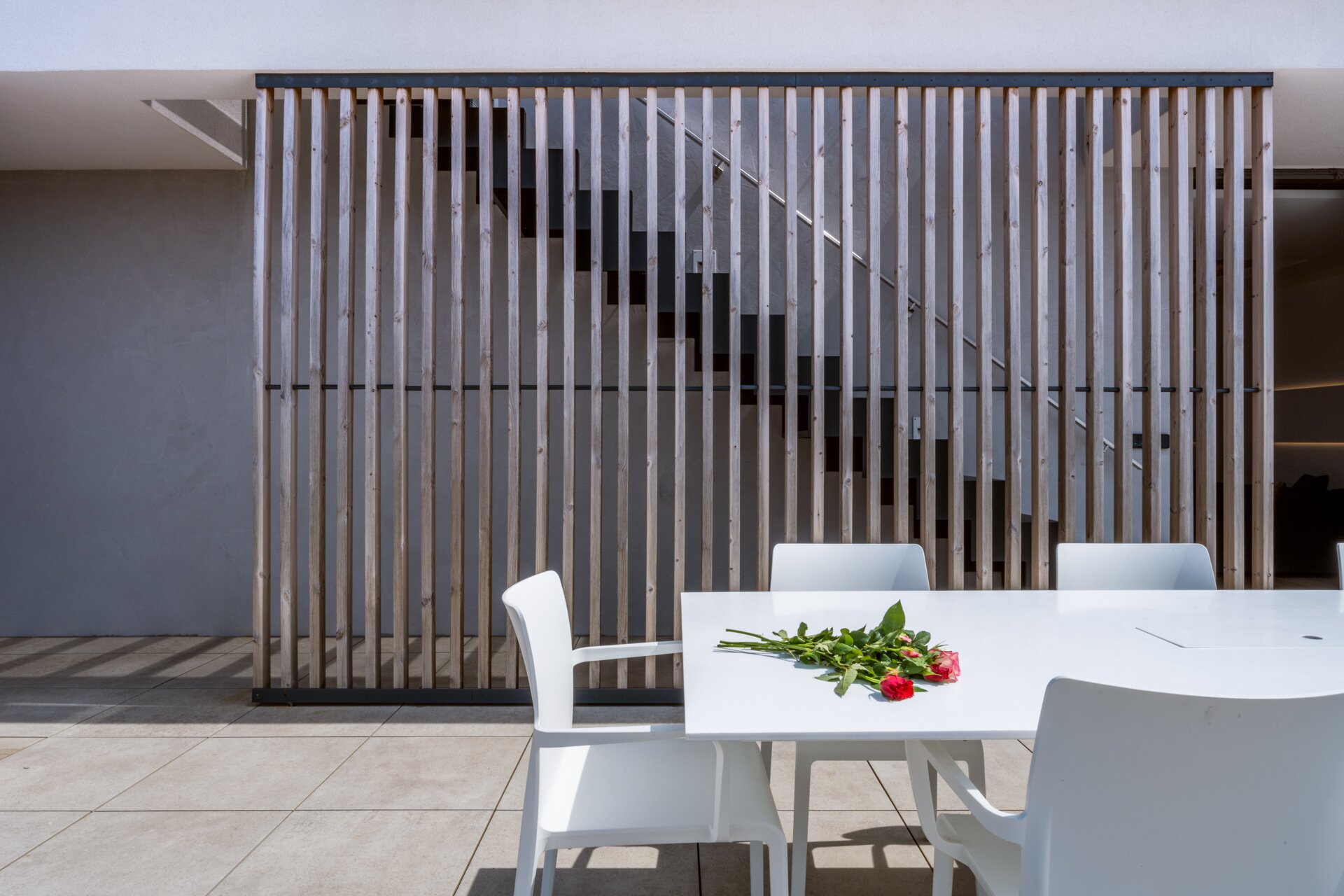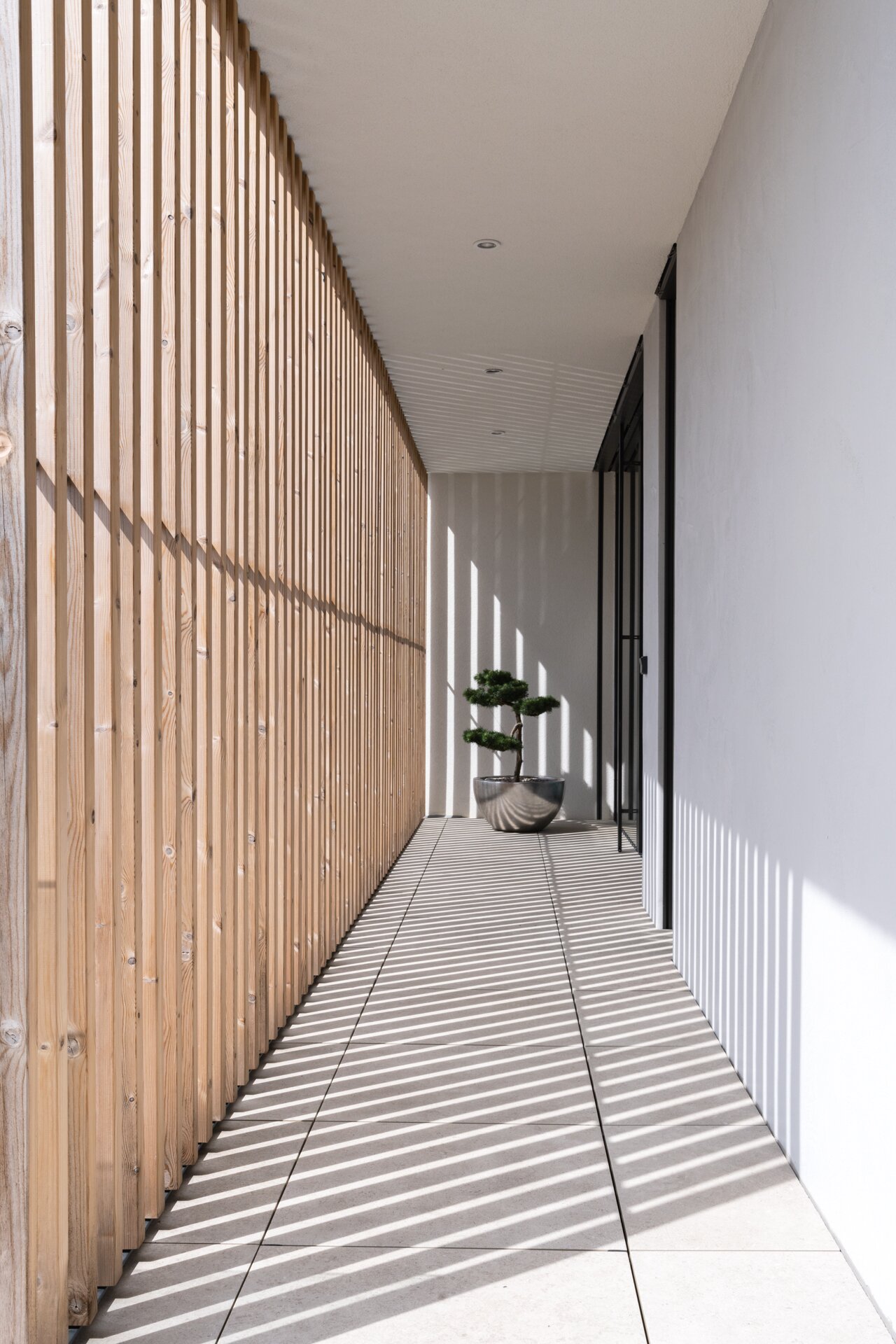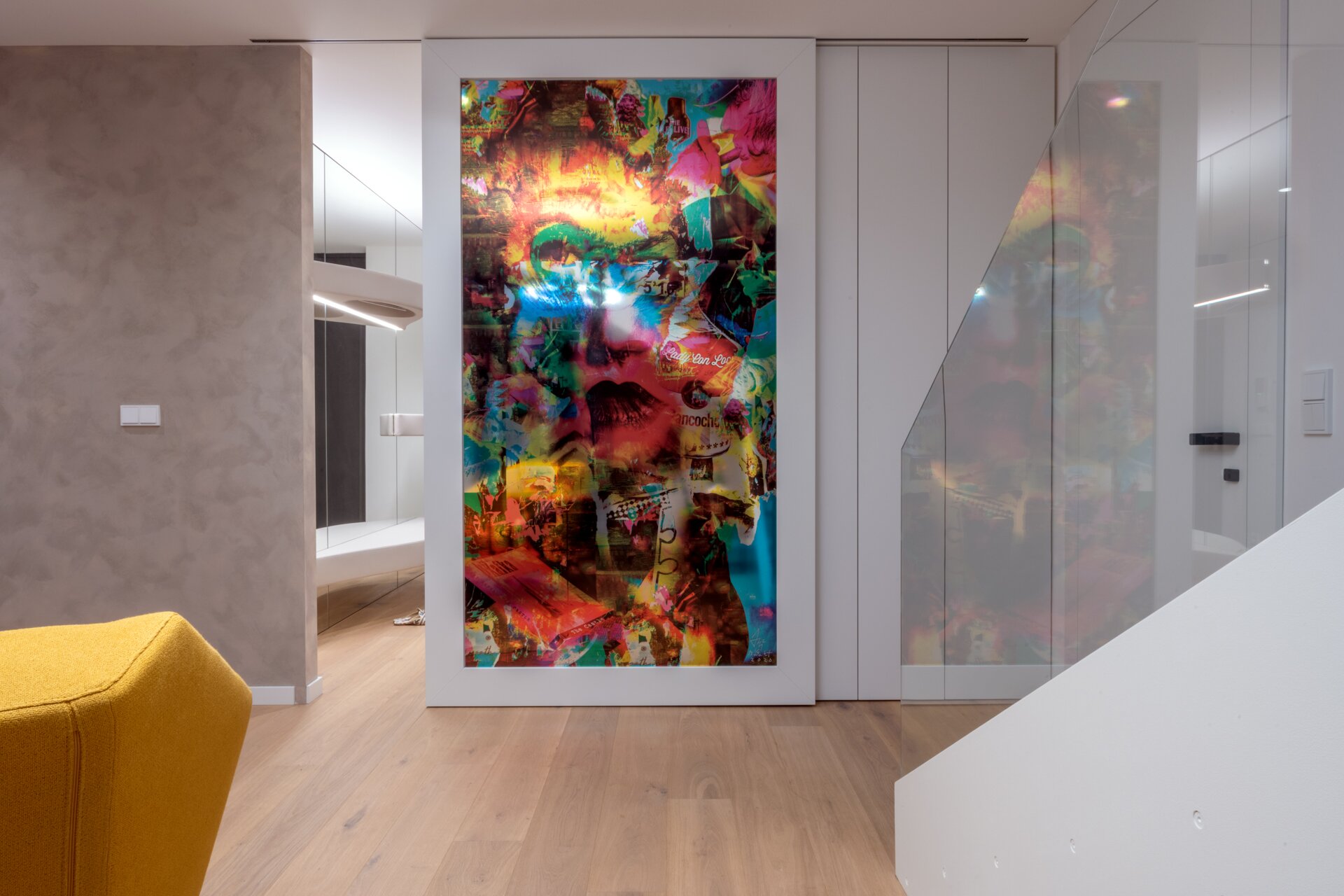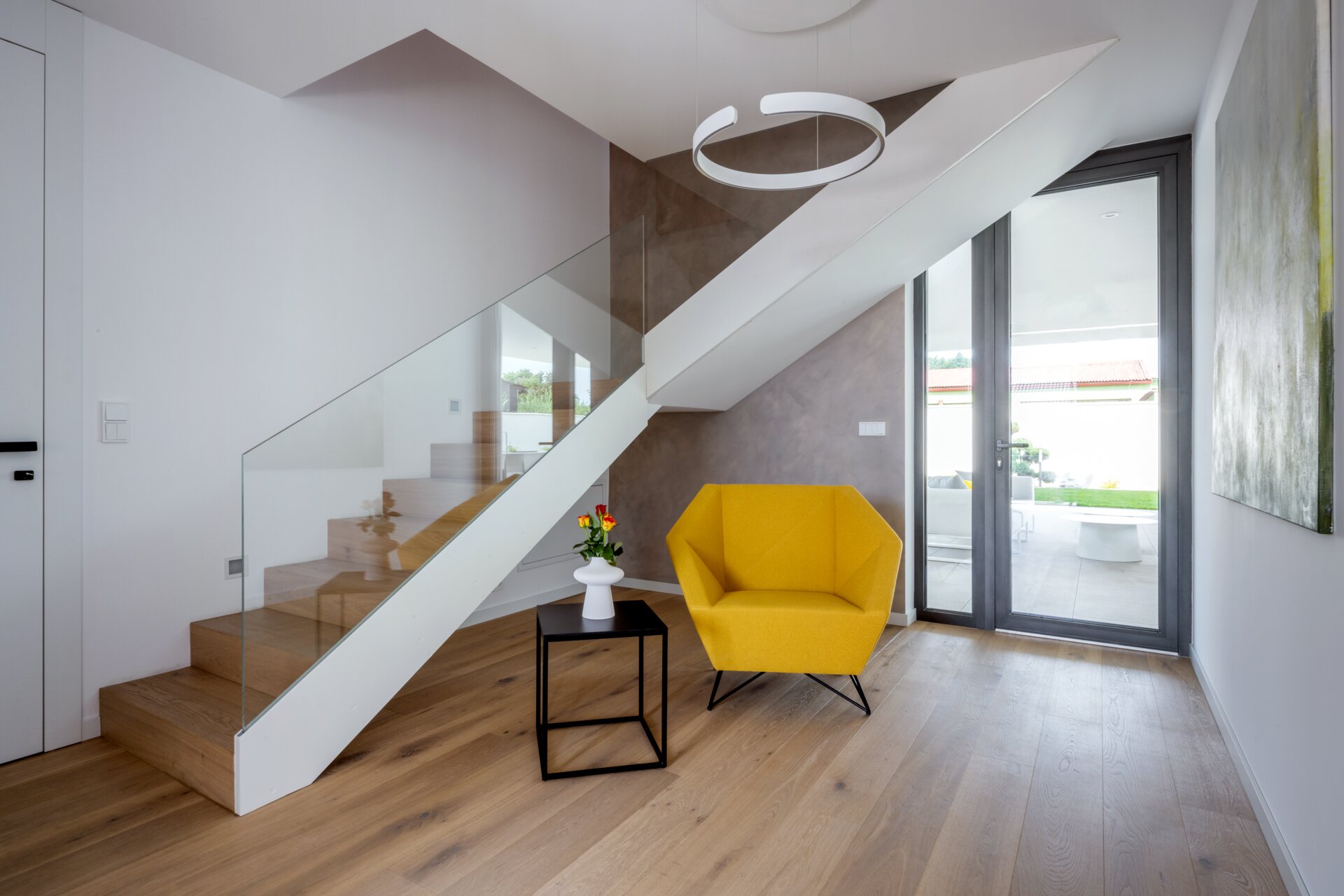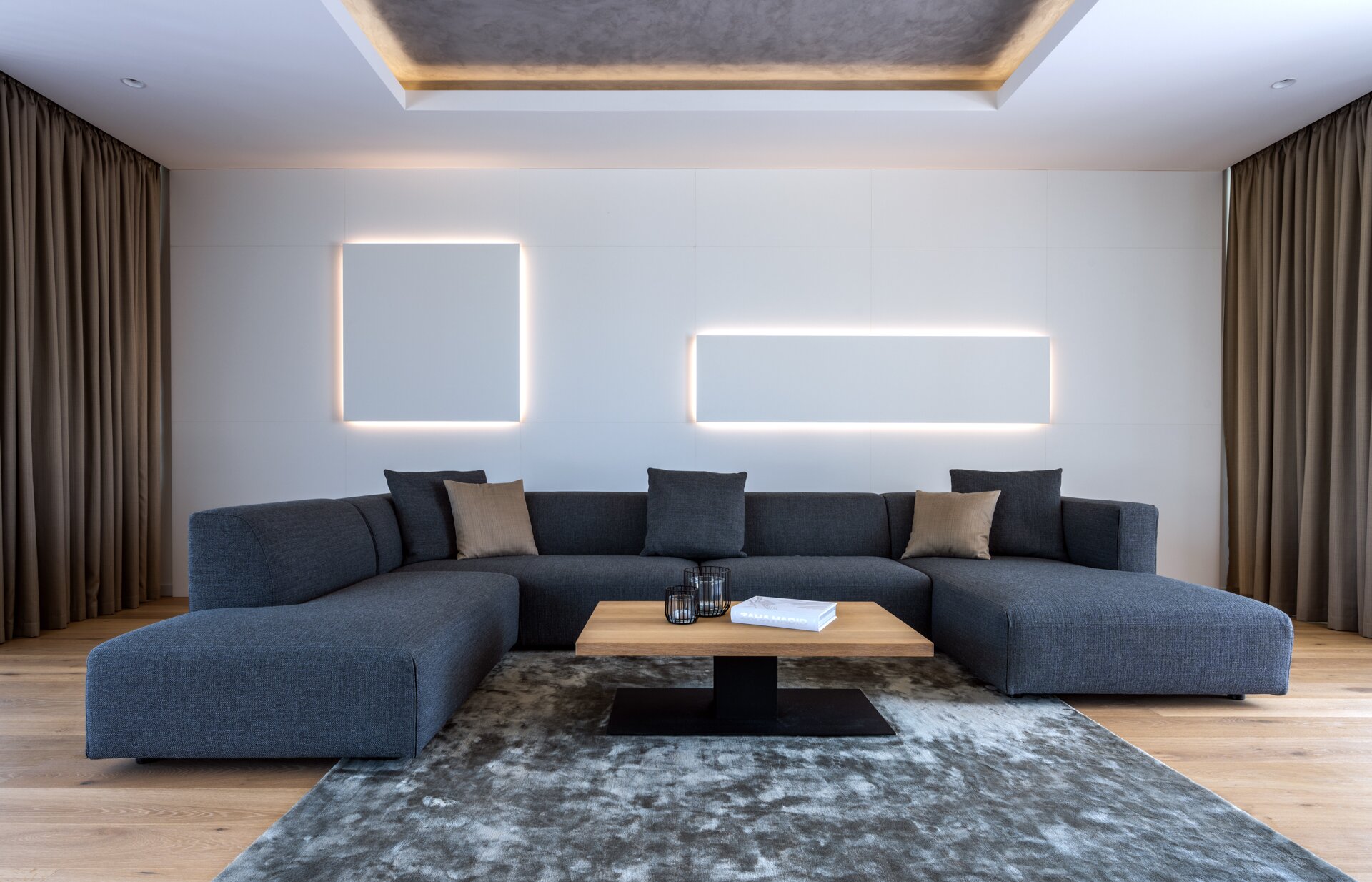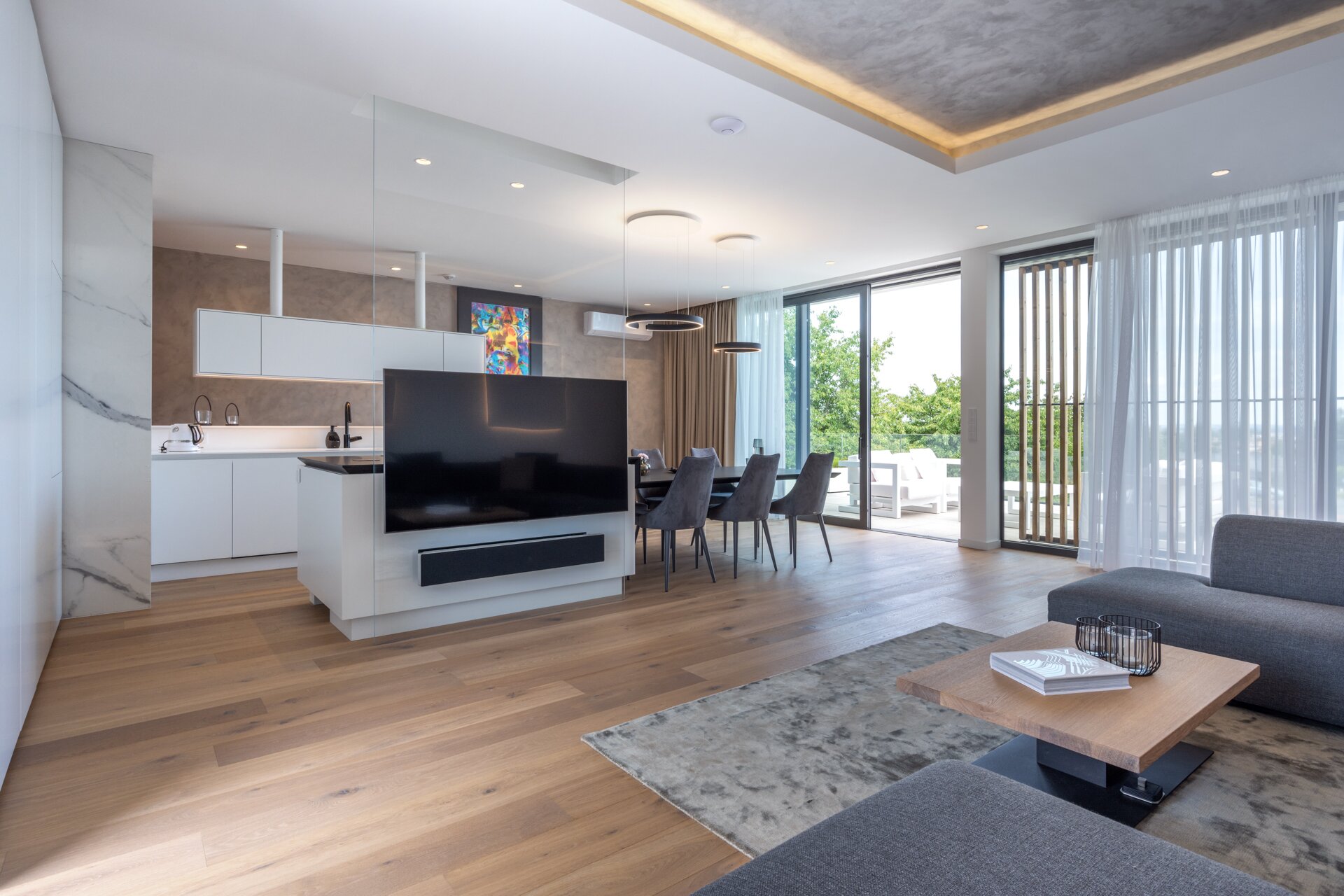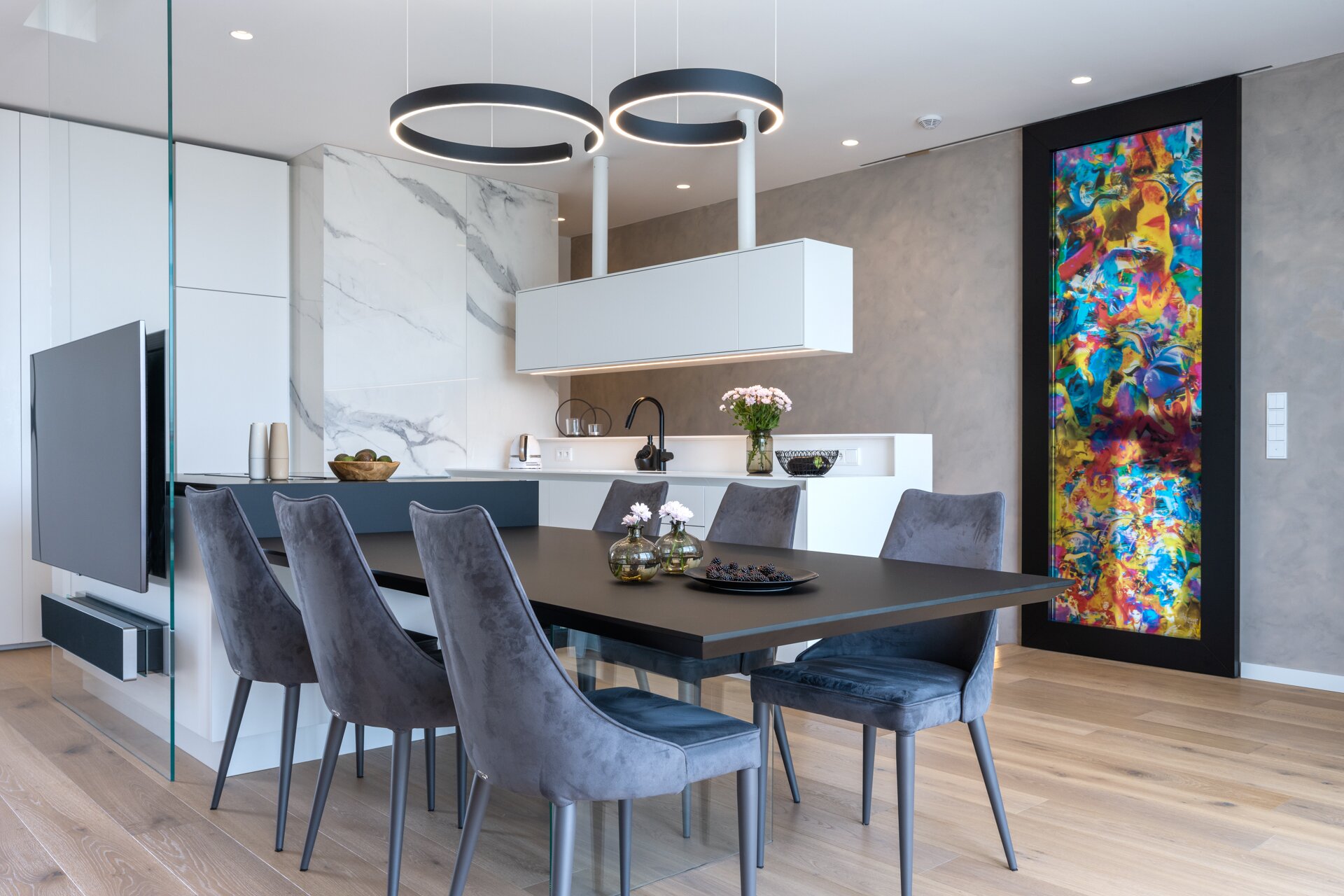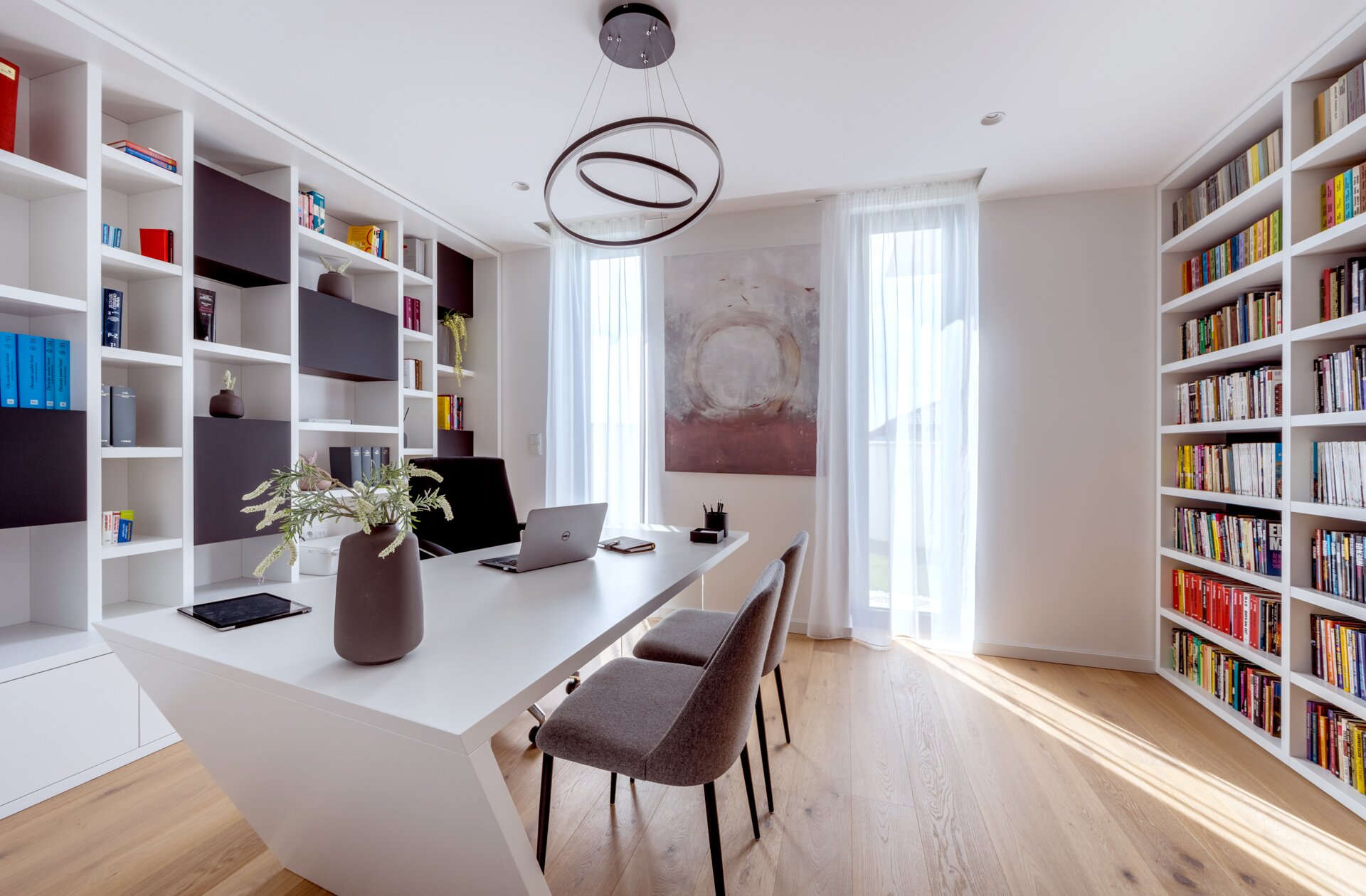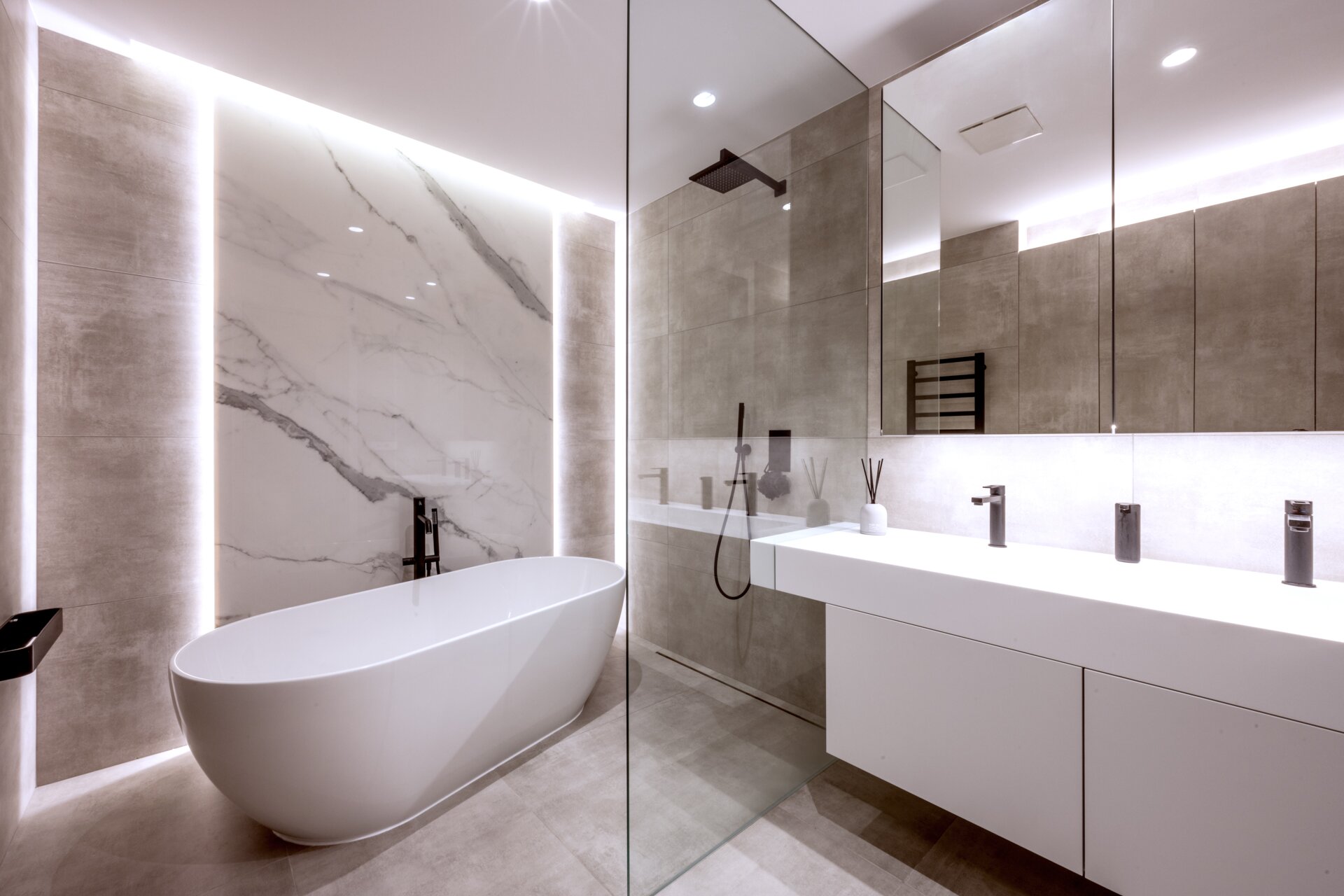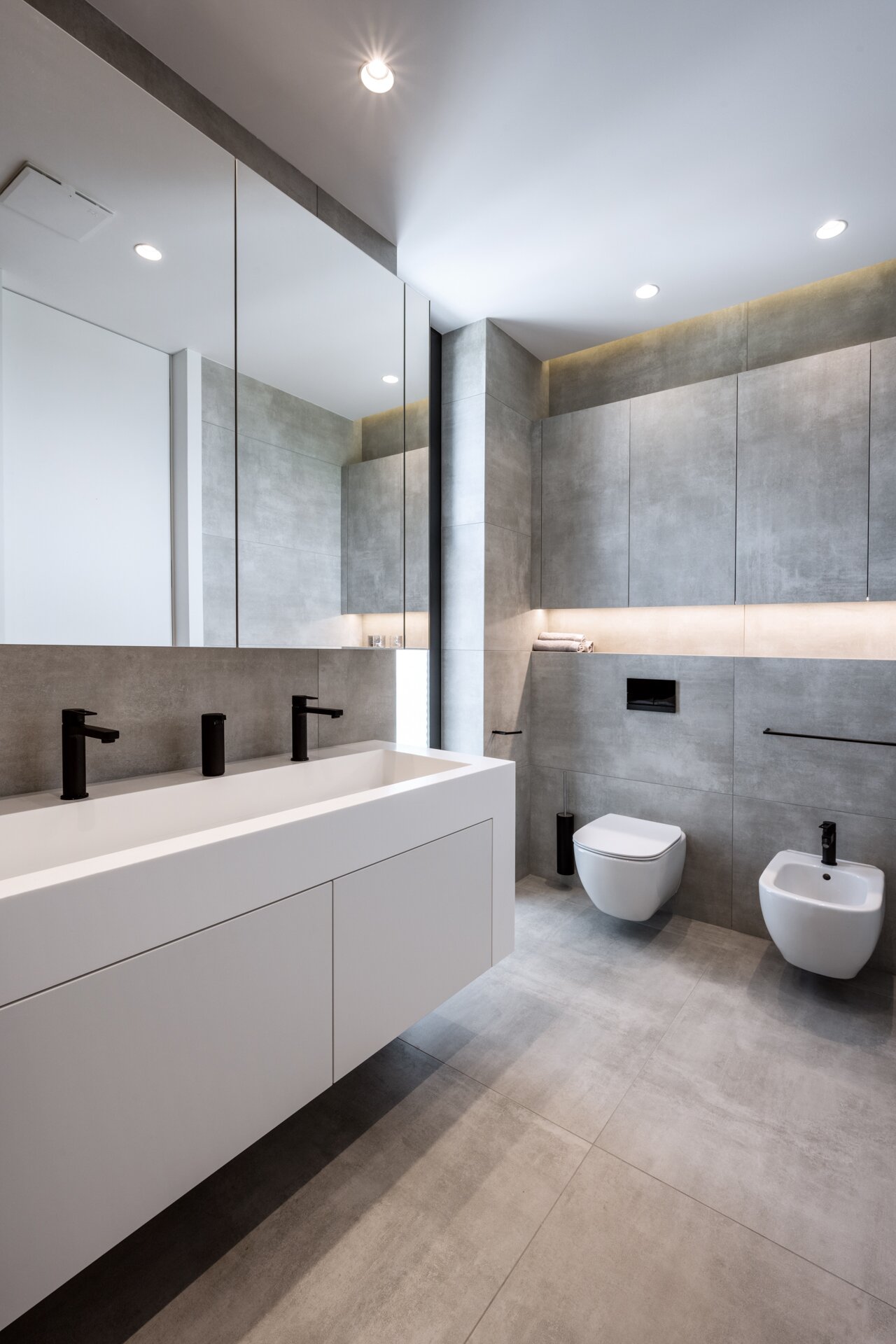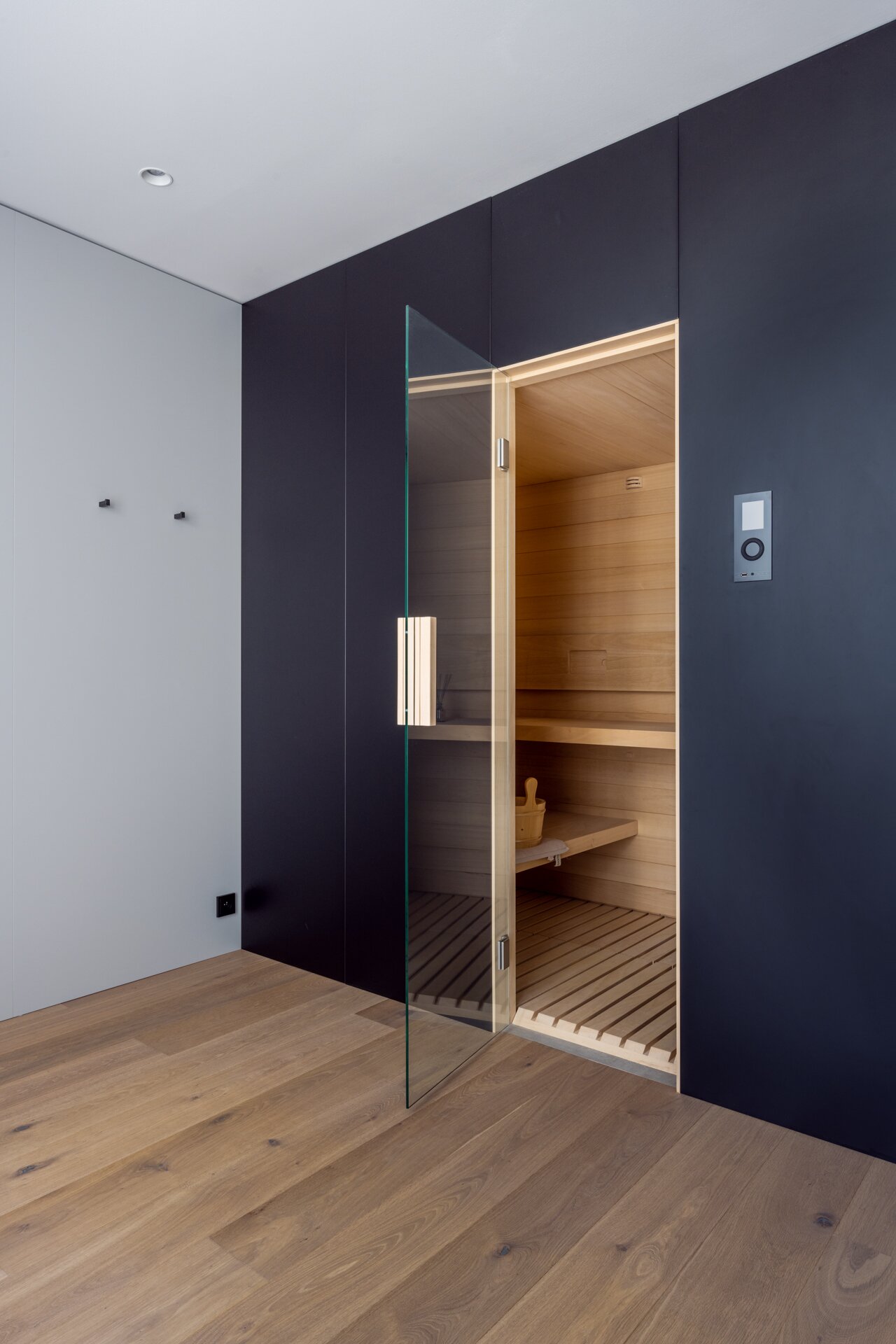| Author |
Ing. arch. Filip Hejzlar, Ing. arch. Markéta Orlová, Ing. arch. Hana Al-Gibury/ ateliér de.fakto |
| Studio |
|
| Location |
Plzeňský kraj - Klatovy |
| Investor |
soukromá osoba |
| Supplier |
BKP TRANSPORT GROUP S.R.O. |
| Date of completion / approval of the project |
March 2021 |
| Fotograf |
|
The overall concept of the house is based on maximum use of outdoor spaces, which are connected with the interior, creating a warm and airy layout of the house, which is a simple representation of its material, but its dynamic morphology. The main idea was to connect two wearing pitched masses that their arrangement ensures meeting specified criteria. We designed the family house with regard to the use of the potential of the land and the fulfillment of the investor's assignment. We opened the house towards attractive views of the city. On the contrary, we have closed it to our neighbors and the industrial area.The building consists of two masses, which gave rise to generous terraces oriented to the east and west. In total, the house has four outdoor terraces. The upper mass of the house with its arrangement created a covered access to the house on one side and a covered outdoor terrace on the other.
The design of the garden responds to the surroundings and creates a natural screen from the adjacent road. It consists of a combination of ornamental plants and woody plants. The interior, which is conceived here in a minimalist spirit and morphology corresponding to the tectonics of the house, is dominated by gray-beige tiles intertwining the entire house and built-in furniture in the predominant white color, which is accentuated by the use of large-format Calacatta ceramics. The construction of the house consists of a brick Porotherm system and monolithic concrete ceilings.The facade of the house consists mainly of white plaster in combination with gray decorative plaster complemented by wooden slats providing shading and privacy. The whole house is equipped with atypical custom furniture. All storage spaces and technical equipment for the background is hidden in the joinery elements, which are further connected to other functional interior equipment.
Green building
Environmental certification
| Type and level of certificate |
B
|
Water management
| Is rainwater used for irrigation? |
|
| Is rainwater used for other purposes, e.g. toilet flushing ? |
|
| Does the building have a green roof / facade ? |
|
| Is reclaimed waste water used, e.g. from showers and sinks ? |
|
The quality of the indoor environment
| Is clean air supply automated ? |
|
| Is comfortable temperature during summer and winter automated? |
|
| Is natural lighting guaranteed in all living areas? |
|
| Is artificial lighting automated? |
|
| Is acoustic comfort, specifically reverberation time, guaranteed? |
|
| Does the layout solution include zoning and ergonomics elements? |
|
Principles of circular economics
| Does the project use recycled materials? |
|
| Does the project use recyclable materials? |
|
| Are materials with a documented Environmental Product Declaration (EPD) promoted in the project? |
|
| Are other sustainability certifications used for materials and elements? |
|
Energy efficiency
| Energy performance class of the building according to the Energy Performance Certificate of the building |
B
|
| Is efficient energy management (measurement and regular analysis of consumption data) considered? |
|
| Are renewable sources of energy used, e.g. solar system, photovoltaics? |
|
Interconnection with surroundings
| Does the project enable the easy use of public transport? |
|
| Does the project support the use of alternative modes of transport, e.g cycling, walking etc. ? |
|
| Is there access to recreational natural areas, e.g. parks, in the immediate vicinity of the building? |
|

